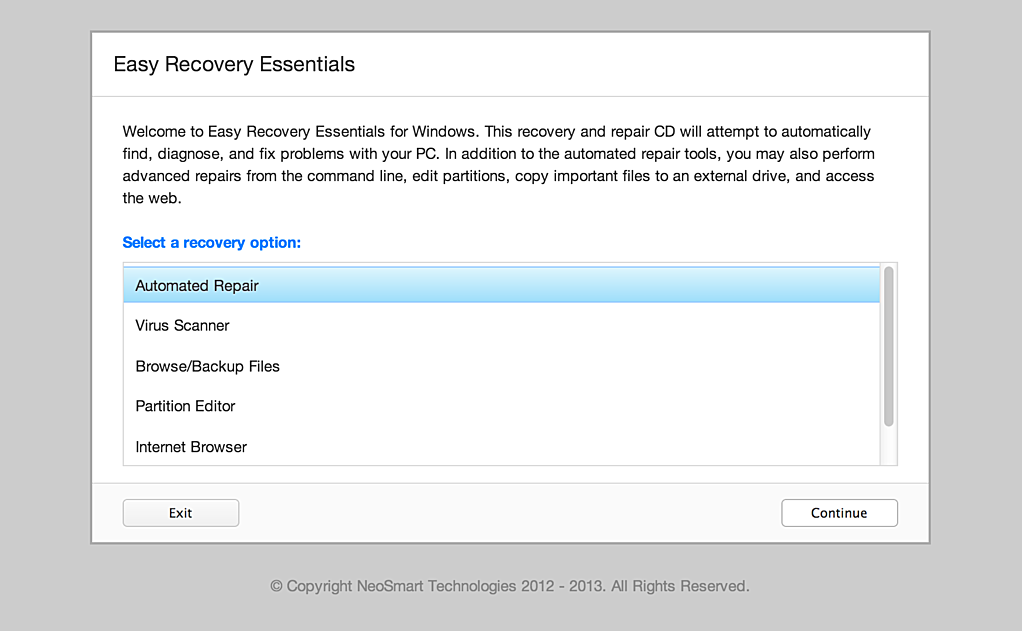Easy Recovery Essentials %guarantee% automatically using the System Restore feature of the bootable EasyRE environment. EasyRE is currently available for Windows XP, Vista, 7, 8, 10, and Windows 11 and can be downloaded and created on any PC.
The System Restore feature of EasyRE is “fully non-destructive” — it does not in any way touch, remove, or undo changes to your personal files and folders (such as the Desktop, Downloads, Music, Pictures, etc.)
- Download Easy Recovery Essentials. It’s important to download the copy that corresponds to your Windows version (XP, Vista, 7, 8, 10, or Windows 11). If you’re unsure, this guide can help you identify what version of Windows you have installed.
- Burn the image. Follow these instructions on how to burn the bootable ISO image very carefully, as making a bootable CD can be tricky! Alternatively, these instructions explain how to create a bootable EasyRE recovery USB stick/drive.
- Boot up your PC from the Easy Recovery Essentials CD or USB you created.
- Once EasyRE is running, choose the “Automated Repair” option and click Continue.
- After EasyRE scans your computer’s drives, identify and select the drive letter for your Windows installation from the list, and then click on the System Restore button to begin.
- EasyRE will scan the selected Windows installation for System Restore points. System Restore snapshots that were located, if any, are then listed and displayed, allowing the user to choose a particular snapshot (associated with a certain date) for restore/recovery:
After selecting the restore point you which to revert your system to, click on Restore to begin.
- EasyRE will begin the process of restoring your system configuration to the state it was in at the date that was selected. Only system files and registries will be affected, as the Easy Recovery Essentials’ System Restore feature is non-destructive and does not affect user data.
- Once the process is complete, EasyRE will report its findings. Click on the Restart button to reboot your PC and test the changes.
- The “%error%” error should now be fixed as your PC begins to load:




